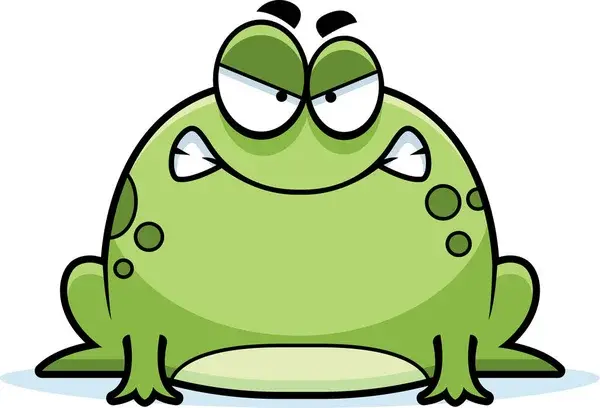It’s mental that alcohol has different rules concerning labeling. It should have the nutritional value like everything else.
Good do it. My father died 2 years ago from alcohol related cancer it was fucking horrible.
If it saves even one person from going through that or watching their loved one go through it, it’s worth it.
I’m not Canadian, but I think that anyone who has watched a loved one suffer and wither and die in agony from cancer would argue that you deserve to know when you’re putting yourself at risk of that.
None of those warning labels seem excessive or pointless anymore after watching the last months of my father’s life.
Have you watched someone die who didn’t drink?
Was it more pleasant?
Do you support MAID, but oppose all things that make life pleasant but may result in premature death? If so, why?
Yes, I have. It was much more pleasant.
Watch someone live in agony for months, then come back and be a smart ass.
Edit: also, why the fuck would anything you said above matter? Nobody is telling you that you can’t drink, they just want to make sure you know and accept the risks.
I’m sorry for your pain. And the smart ass over there.
They’re anything but smart.
Thanks, I appreciate you.
Currently watching someone live in agony and slowly die from non-alcohol related cancer, you don’t have a monopoly on pain.
Edit: also, why the fuck would anything you said above matter? Nobody is telling you that you can’t drink, they just want to make sure you know and accept the risks.
No, that’s what education and information campaigns do. You tell people about the dangers of something. Putting warning labels on it is what you do to nag someone every single time they try and enjoy something.
We will all die, and most of the ways to die are horrendously unpleasant. Spend your life slapping warning labels on burnt toast and avoiding going into the sun if you’re that scared of the inevitable and see if it makes you happy.
“You just need to educate and inform!!!”
“Ok, we’ll educate and inform people using a proven method we’ve already successfully implemented with cigarettes”
“No not like that!!”
I may not have a monopoly on pain, but you’re certainly trying hard to have one on being intentionally obtuse.
Went for the kill in that last sentence!
You should be wearing sunscreen.
This is how you cope with something. Figure out what it is.
Is it a contest for you? If so, why?
It’s not a contest, it’s a frank acknowledgement that we will all die and a tiny fraction of the ways to die are pleasant.
Most of us will get cancer or heart disease or dementia and slowly whither away regardless of how we live our lives. At some point, min/maxing and being ultra cautious is utterly pointless.
Cool story
If you want to engage in a discussion about when min / maxing risk-taking vs life-expectancy makes sense on a personal, or regulatory level, I’m all ears…
Otherwise, good contribution. 👏👏👏
As a current imbiber, yes absolutely. In fact they should stick on a picture of a fatty liver disease liver vs a healthy one like they do on smokes.
Alcohol causes cancer, so yes.
So does exhaust from cars. I do think we should force cars to have a giant print of text on them to warn of the risks of cancer and death.
I love all the people who leave their cars idling during daycare drop off.
Thanks for pumping all those fumes straight into my kid’s face.
Under previous guidance, the CCSA recommended a maximum of 10 standard alcoholic drinks per week for women and 15 for men. Now, it says no amount of alcohol is completely safe, and recommends a maximum of two drinks a week to stay within the lowest risk threshold.
I’m surprised it’s that high.
I think it makes sense to put labels on alcohol though considering weed and cigarettes already have massive warning labels. Seems like legacy or grandfathered in policy that we don’t already.
I wish they’d put the number of standard drinks on the can. Having to calculate it for a 500ml 6% drink or a 150ml 8% or whatever gets tedious.
As long as the labels don’t end up on absolutely everything like in California. It makes sense on things you actually consume, but a lot of other tech products and tools have the California warnings and it’s become meaningless to me.
I have no way of knowing if just holding a thing increases my risk of cancer or if it’s just an issue if I was to lick a surface or consume something inside.
I mean, aluminum apparently causes cancer?!?What can I even do with that information?Edit: I read the wrong list, Aluminum is fine but other metals like Lead and Nickel are bad. The problem is the labels don’t tell you what the danger is. Does the product have a literal lead weight inside that you’ll never touch? Or is the outside coated in one of the other 600 cancer causing chemicals? (https://oehha.ca.gov/media/downloads/proposition-65//p65chemicalslist.pdf)
Crazy that wood dust is on there. That explains why basically all IKEA furniture “may cause cancer”
I suspect part of how annoying those labels feel is us being a little unsettled by just how many things around us might be killing us.
I don’t think they need cancer warnings, they needs “this very addictive substance can irreparably ruin your life if you don’t moderate” warnings
I suspect this is going to pull in two directions.
On the one hand, people are already developing some level of warning label fatigue, where they skim over the labels without registering the content just like they do on-line ads. (Both practices are doubtless known to cause cancer in California.)
On the other hand, there’s a type of personality who may, in fact, change their minds about buying if presented with a short, sharp “this is bad for you” reminder on the way to the checkout.
Putting the labels on is, overall, a harmless experiment to try, so we might as well see if it does any good. Personally, I don’t think we’re going to see much change until we spend a couple of decades broadcasting and reinforcing the “no amount is safe” message, and even then many people will keep drinking. Just as there are still smokers today, even after many decades of “you will die horribly if you do this” messaging.
The idea that putting labels on every bottle is about “letting Canadians know and informing them better”, is flat out horseshit.
That’s what education campaigns are for. Putting labels on every bottle is about reminding / nagging people every single time they try and enjoy having a drink to try and make them enjoy it less and change their behaviour.
You can be on board with that or not, but let’s stop lying with the ‘its about education’ comments.
I think you seriously underestimate the number of people who are completely unreachable with new information unless it is put directly in front of their faces.
And how many of those people actually read the fine print on labels?
I’ve seen a ton of empty cigarette boxes over the years (I don’t smoke) but I’ve never bothered actually reading the warnings.
Warning labels do work. Turn the bottle the other way or pour in a glass if you don’t want to see it. The doctor knows more than you do.
We found that graphic warnings had a statistically significant effect on smoking prevalence and quit attempts. In particular, the warnings decreased the odds of being a smoker (odds ratio [OR] = 0.875; 95% CI = 0.821–0.932) and increased the odds of making a quit attempt (OR = 1.330, CI = 1.187–1.490). Similar results were obtained when we allowed for more time for the warnings to appear in retail outlets.
https://academic.oup.com/ntr/article/15/3/708/1091051
Pictorial warning labels proposed by FDA create unfavorable emotional reactions to smoking that predict reduced cigarette use compared to text alone, with even smokers low in self-efficacy exhibiting some reduction. Predictions that low self-efficacy smokers will respond unfavorably to warnings were not supported.
Where did I say that they didn’t work?
I said that the method of working was through nagging, not education.
They do work, they are not for “education” or “information”. Just another proof that propaganda works on everyone.
Ah yes the evil doctors are spreading propaganda scheming to make you healthier.
They literally are. The mechanism of warning labels working is not via educating you about something once, and letting you make a decision, it’s about telling you over and over again.
It works via constant relentless bombardment of the same message over and over, just like propaganda and advertising.
It is effective, but it is also not effective just through “education” or making people well informed.
Your bias shows, there was nothing in my post about good or evil doctors.
The irony of complaining about someone else’s bias when your previous comment called information “propaganda”…
What do you think ‘propaganda’ means?
It is propaganda in its purest form, again people are trained by propaganda to view it as sonething bad and only done by evil organizations. Of course “scary pictures” work on cigarettes, that’s their intended purpose, and they would work as well on alcohol or whatever would be unacceptable next year. I’m not against and don’t care much about something that happens essentially in a different world.
Who do you think helped develop the warnings?
Does it matter?
I need to say that I adore how you have relentlessly asserted that it only counts as education if you’re told once and then never again, because putting a label on the bottle can’t possibly be a form of education.
I love you I have relentlessly asserted that the mechanism it’s working through couldn’t possibly be accurately described as nagging.
Oh what scholars everyone is reading a cigarette label and finding out that cigarettes can give you cancer :O! How much better they understand that cigarettes do, in, fact, give, you, cancer! Suddenly knowing that brand new fact changes everything about their decision making! How better informed are they huh?
You’re making an (asinine) assertion here that people aren’t changing their minds about smoking based on the warning labels, when even the barest little bit of effort on your part would turn up a wealth of studies demonstrating that the cigarette warnings have been very successful at getting people to quit.
Like, any effort at all. Just a little bit.
As an aside:
I love you…
Thanks, I guess, but let’s try to stay on topic.
You’re making an (asinine) assertion here that people aren’t changing their minds about smoking based on the warning labels,
No, I’m extremely explicitly not. I’m saying that the mechanism behind that decision is not informing or education, but nagging.
…is not informing or education, but nagging.
See, there’s that “it’s not education” thing again.
Fun fact: repetition is the key to internalizing information. This is like grade-school level stuff here. I bet when the teacher told you that you had to practice the alphabet more than once you threw a fit about them nagging you when you just wanted “education”.
Repetition is also the key to propaganda and advertising effectiveness, it’s the reason why you know exactly what the quicker picker up is and probably hate that you do right now.
You’re literally using the word “education” in the way that China uses it to describe their re-“education” camps for the Uighurs.
Try and grow the fuck up and learn how to have a nuanced discussion rather than simplifying everything down to good and bad and black and white.
One of us needs to do some growing up for sure; I suspect it’s the one saying that we can’t warn people about cancer because it’s the same as Chinese propaganda; that one-two punch of racism and non sequitur.
Keep being awesome man.
Should put more than just cancer warning…like warning about losing your house, your family, your dignity.
I mean, it’s pretty well known that alcohol isn’t healthy. Do we need a warning about every risk it poses? Cancer, liver damage, fetal alcohol syndrome, impaired driving, addiction, etc.
It’s a pretty big list.
I suspect that most people are already aware that alcohol is not good for one’s health.
But it’s becoming more accepted that it is specifically a cancer risk, and not just all the other bad things it does to you.
What?! I had no idea. Excuse me while I put down this 4th mimosa. And by down, I mean my throat.
Maybe they should put a warning label on cars too, “Warning: May collide with children.”
know the risks, people!
they should put a warning label on pens. “Warning: May stab in eye”
While not strictly required, where i live you get to shave off a few months between the first and second levels of your license if you take lessons, and a required part of those lessons is watching an uncensored video on the consequences of drunk driving, speeding in school zones and not respecting semis. It left quite the impression.
Between Red Asphalt and an AP forensic criminology unit on vehicular collision I was successfully motivated to stay alive and in one piece while driving. Honestly probably kept me from being incredibly stupid on my motorcycle more than once as well.
Pen danger to the eye is obvious to most people. Cancer caused by a lifetime of drinking is not.
Never put salt in the eyes.
Never put salt in the eyes.
Always put salt in the eyes
I don’t know how it works where you live but where I live you literally have to pass a test indicating that you know how to operate a car and how insanely dangerous operating one is before you can be licensed to drive.
Unironically 100% agree with the labeling of cars.
they should put a warning label on pens. “Warning: may stab in eye”
That’s a bad faith strawman.
You’re a bad faith straw, man!
I have about had it with this safety/nanny culture.
Need to start putting warnings on bureaucrats instead stating, Will waste your tax money, and micromanage your life.
Research has shown that warning labels on dangerous products such as cigarettes reduces deaths so it’s clearly not a waste of money.
What’s next a warning label on breathing? Warning, failure to inhale and exhale will cause oxygen deprivation and death?
That’s a false equivalence and a strawman made into a sentence.
It’s pretty cool how some people in the comments are just outright telling us they have no ground to stand on, though.
They could have investments in the alcohol industry.











